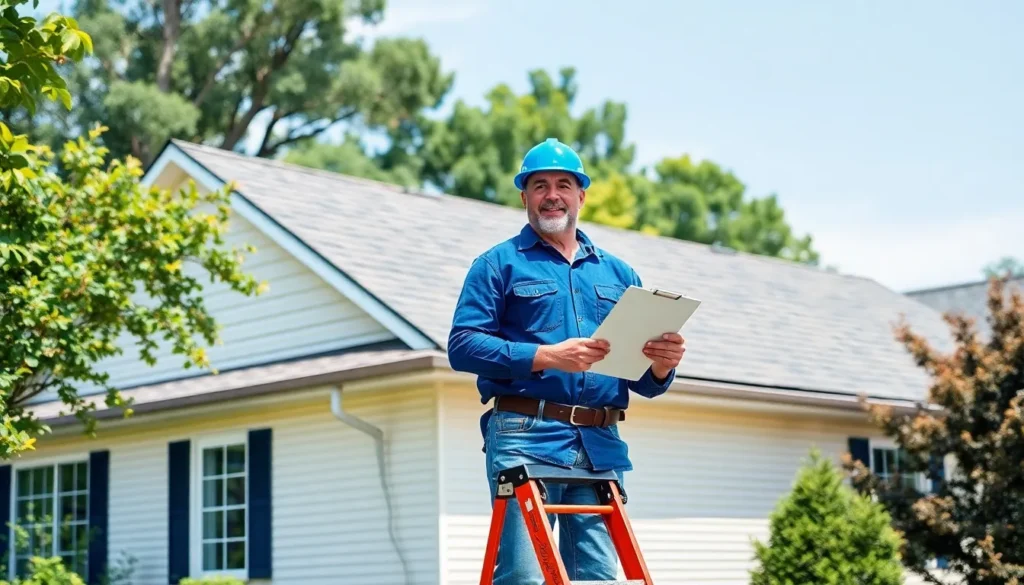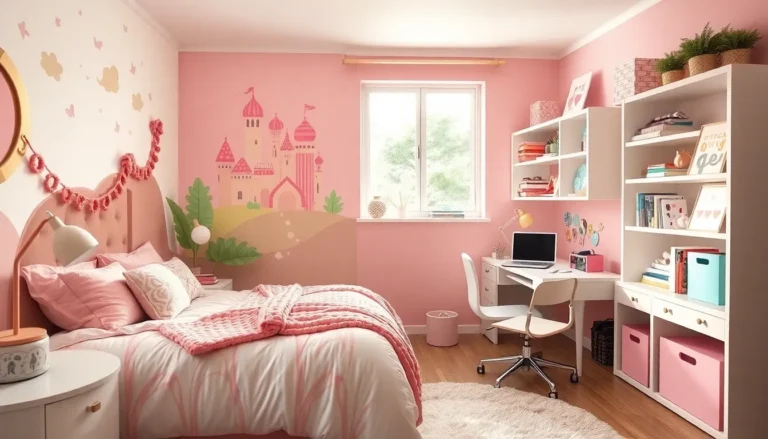When it comes to protecting a home, the roof plays a crucial role. It shields against the elements and enhances curb appeal, making roofing solutions an essential consideration for homeowners. With a variety of materials and styles available, choosing the right roofing system can seem overwhelming.
Modern roofing solutions offer not just durability but also energy efficiency and aesthetic appeal. From traditional shingles to innovative metal and eco-friendly options, each choice comes with its own set of benefits. Understanding these solutions can help homeowners make informed decisions that suit their specific needs and budgets.
Table of Contents
ToggleTypes Of Roofing Solutions
Homeowners can choose from various roofing solutions, each offering unique benefits. These solutions encompass a wide range of materials and design options, allowing for customization based on preferences and requirements.
Material Options
- Asphalt Shingles: Asphalt shingles remain popular due to their affordability and versatility. They come in various colors and styles, making them suitable for different architectural designs. Average lifespan ranges from 15 to 30 years.
- Metal Roofing: Metal roofing is known for its durability and longevity. It can last 40 to 70 years with proper maintenance. Common materials include steel, aluminum, and copper, often featuring energy-efficient options that reflect sunlight.
- Wood Shingles and Shakes: Wood shingles offer a natural aesthetic and excellent insulation properties. They typically last 20 to 40 years. On the other hand, shakes are thicker and have a more rustic appeal, but they may require more maintenance to prevent rot.
- Clay and Concrete Tiles: Clay and concrete tiles provide a durable and fire-resistant roofing solution that lasts 50 years or more. These tiles are heavy and require a strong structural support, ideal for warm climates.
- Slate Roofing: Slate offers timeless beauty and unparalleled longevity, lasting over 100 years. Its natural stone composition makes it resistant to weathering, though its high cost and weight necessitate professional installation.
- Eco-Friendly Options: Green roofing solutions, such as living roofs or recycled materials, promote sustainability. These options enhance energy efficiency and reduce environmental impact while providing unique landscaping opportunities.
Design Variations
- Gable Roofing: Gable roofs feature triangular shapes that allow for effective water drainage. This design offers additional storage in attics and enhances ventilation.
- Hip Roofing: Hip roofs have slopes on all four sides, providing stability in high winds. This design excels in areas with heavy snowfall, as it allows for efficient snow runoff.
- Flat Roofing: Flat roofs are ideal for modern architecture and urban settings. They offer usable space for roof gardens or installations such as solar panels. Proper drainage and waterproofing are essential to prevent leaks.
- Mansard Roofing: Mansard roofs feature four slopes, two on each side, which create additional living space in the attic. This design combines aesthetic appeal with functional benefits.
- Gambrel Roofing: Similar to mansard roofs, gambrel roofs have a unique two-sided slope that offers an appealing look often seen on barns or country-style homes. This design maximizes attic space.
- Shed Roofing: Shed roofs have a single slope, making them a cost-effective choice for modern and minimalist designs. They allow for large windows and plenty of natural light while providing ample drainage.
Benefits Of Modern Roofing Solutions

Modern roofing solutions enhance energy efficiency and durability, contributing to long-lasting protection and cost savings.
Energy Efficiency
Energy-efficient roofing solutions minimize heat transfer, reducing energy consumption for heating and cooling. Reflective materials, such as cool roofs and metal roofing, lower indoor temperatures during warm months, decreasing air conditioning usage by up to 20%. Insulated roofing systems prevent heat loss, ensuring better thermal performance in colder climates. Homeowners opting for energy-efficient roofs might benefit from potential tax credits and rebates.
Durability
Durable roofing materials withstand severe weather conditions and extend the lifespan of a roof significantly. Materials like metal, slate, and concrete tiles resist damage from wind, hail, and rain, with lifespans often exceeding 50 years. Advanced coatings and finishes protect against UV rays and algae growth, further enhancing durability. Regular maintenance contributes to overall performance, but modern materials often require less upkeep than traditional options.
Factors To Consider When Choosing Roofing Solutions
Selecting the right roofing solutions involves careful assessment of several key factors. Homeowners must evaluate climate conditions and budget constraints to make informed choices.
Climate Considerations
Climate plays a crucial role in determining suitable roofing materials. Regions with high rainfall require materials that resist moisture, like asphalt shingles or metal roofing, which repel water. In contrast, hot climates benefit from reflective surfaces, such as cool roofs or light-colored tiles, which minimize heat absorption. Snowy areas call for steep-sloped roofs, ensuring proper snow runoff to prevent damage. Additionally, wind-resistant materials are essential in hurricane-prone regions to withstand extreme weather conditions. Understanding local climate patterns helps homeowners select roofing solutions that enhance longevity and performance.
Budget Constraints
Budget constraints significantly influence roofing material choices. Asphalt shingles present a cost-effective option, averaging $90 to $100 per square, making them suitable for tight budgets. Metal roofing, though more expensive upfront at $120 to $900 per square, offers durability and energy efficiency, potentially leading to long-term savings. Eco-friendly materials may have higher initial costs but can qualify for tax incentives and substantially reduce utility bills. Homeowners should also consider installation costs, which vary by material type and roofing complexity. Careful budgeting enables homeowners to invest in roofing solutions that provide value and meet financial expectations.
Maintenance Requirements For Roofing Solutions
Routine maintenance ensures the longevity of roofing solutions and protects the investment. Homeowners should schedule inspections and upkeep at least twice a year.
- Inspect Roofing Materials: Check for missing, damaged, or loose shingles or tiles. Replace or repair these as needed to prevent further issues.
- Clean Gutters and Downspouts: Clear debris from gutters and downspouts to maintain proper drainage. Blocked gutters can lead to water pooling and roof damage.
- Remove Debris: Clear branches, leaves, and other debris from the roof surface. Accumulated debris can trap moisture and encourage mold or algae growth.
- Check for Leaks: Inspect the interior for signs of water damage or leaks. Promptly address any signs to avoid extensive damage.
- Maintain Flashing: Ensure that flashing around chimneys, vents, and skylights remains intact. Damaged flashing can cause leaks and water entry.
- Trim Overhanging Branches: Cut back trees and branches hanging over the roof. This reduces the risk of damage from falling limbs during storms.
- Inspect Attic Ventilation: Assess attic ventilation to ensure it allows for adequate airflow. Poor ventilation can lead to moisture buildup and roof degradation.
- Schedule Professional Inspections: Hire a roofing professional for thorough inspections every three to five years. Experts can identify issues that may go unnoticed by homeowners.
Proper maintenance protects the roof and enhances its durability and effectiveness, ultimately preserving the home’s value.
Choosing the right roofing solution is essential for homeowners looking to protect their investment while enhancing their property’s appeal. With a variety of materials and designs available, it’s crucial to assess individual needs based on climate and budget. Modern roofing options not only offer durability and energy efficiency but also contribute to long-term savings.
Regular maintenance plays a vital role in extending the lifespan of any roofing system. By staying proactive with inspections and upkeep, homeowners can ensure their roofs remain in top condition. Ultimately, informed decisions regarding roofing solutions can lead to a safer and more beautiful home for years to come.



